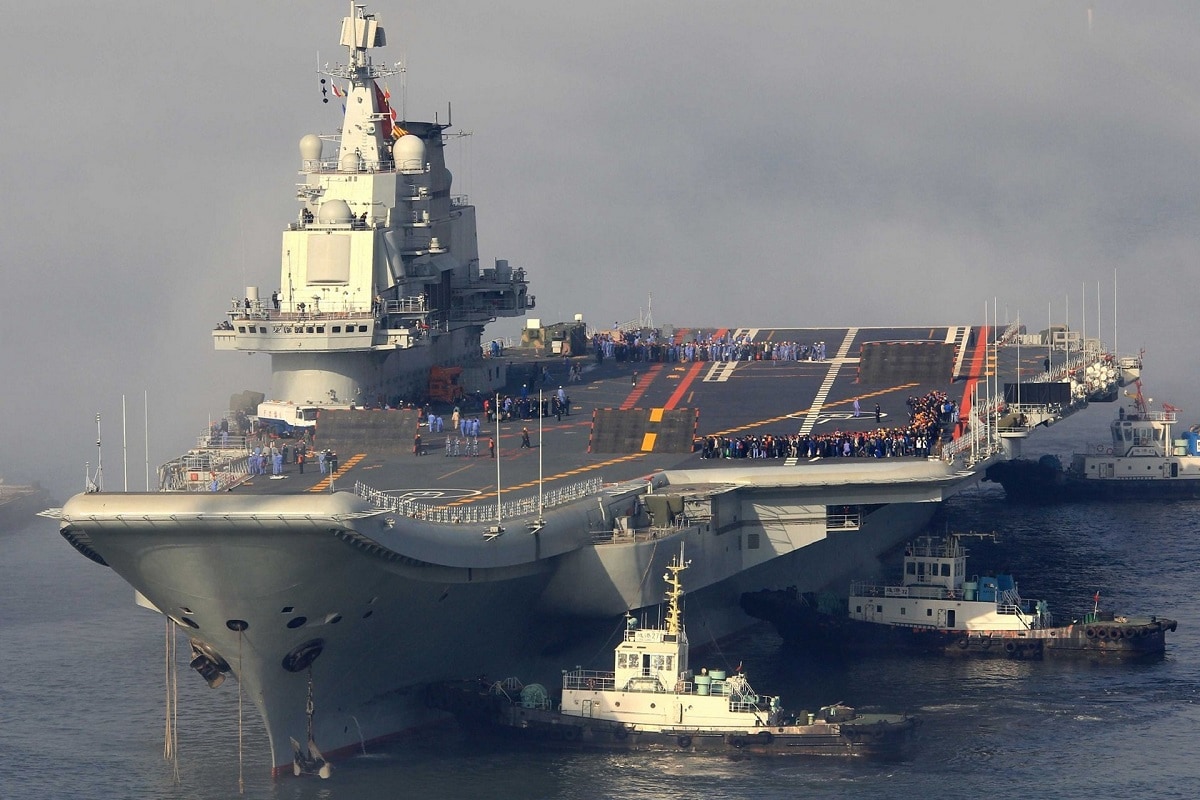In just the past decade, the People’s Liberation Army Navy (PLAN) has undergone a major transformation and reform that has seen it become the largest naval force in the world. As part of that expansion, just last month, Beijing launched its third aircraft carrier, the Type 003 Fujian, while the development of a fourth and even larger carrier is now reportedly underway.
Yet, China will still need several more carriers to fully reach its ambition of becoming a true power in the Indo-Pacific Region and beyond with a blue water navy. According to a Chinese defense analyst, the PLAN will need to operate six or seven carriers, and that is just to watch over the South China Sea and potentially the Indian Ocean.
Wang Hongliang, an associate researcher at the Shanghai Jiao Tong University’s National Strategic Research Centre, said the PLAN’s three fleets would each need two carriers, while an additional carrier would be required for a future Indian Ocean fleet.
“If we are bold enough in predicting it, is it possible to maintain a permanent naval force in the Indian Ocean in the future to more effectively protect China’s most important trade route? Then this fleet, far from home ports, may need an aircraft carrier as well,’ he wrote in The Paper.cn, a Shanghai-based news website, the South China Morning Post reported.
The PLAN is currently divided into three fleets, including the North Sea Fleet, which covers the Yellow Sea and the Korean Peninsula; the East Sea Fleet, responsible for an area that includes the waters around Taiwan; and the South Sea Fleet, which encompasses the South China Sea. Wang suggested the Fujian could be deployed to the East Sea Fleet, where it could be used in a critical role in the event of a conflict in the Taiwan Strait. That would also be fitting as it is named for the mainland province that borders the strait.
Out With the Old?
Moreover, it could be argued that Beijing doesn’t really have three carriers – and that the Type 003 Fujian – is really the actual starting point. The PLAN’s Type 001 Liaoning is a former Soviet Kuznetzov-class aircraft cruiser that had been purchased from Ukraine and refurbished; while the Type 002 Shandong is essentially a Chinese domestically-built copy of the former with a few modifications.
The Type 001 Liaoning was even conceived initially – and has operated – as a training ship, and while it has been reclassified as a combat vessel, its capabilities have been seen as limited. The conventionally-powered warship, which is based at the North Sea Fleet’s home port, lacks aircraft catapults and instead launches fixed-wing airplanes off the ship’s bow using an inclined ‘ski ramp.’
Shandong is currently assigned to the South Sea Fleet, but the PLAN may need more than the single carriers it currently possesses. Wang suggested that flattops, which can serve as floating air bases, would be crucial to maintaining control of the disputed South China Sea, which extends more than 2,000 km (1,200 miles) away from the Chinese mainland coast. Currently, Beijing relies on its presence on several islands as well as artificial islands in the area to maintain control of the region
“The complex security situation in the South China Sea and the far distance from the mainland coastline both require floating airport fortresses that can be deployed to the relevant sea area at any time,” Wang wrote. “Equipping the South Sea Fleet with aircraft carriers will fill the last remaining loopholes of the island defence system in the South China Sea.”
The military analyst further said that the PLAN will need six or even seven carriers to be able to “multitask” and carry out “high-intensity” missions.
The New Model Carrier
The Type 003 Fujian could serve as a base model for all future PLAN carriers. It is equipped with advanced electromagnetic catapults, which will allow it to carry heavier aircraft with a greater range than those utilizing the ski jump.
In addition, Wang believed that the future PLAN carriers could be further upgraded, and that could include replacing the diesel engines with nuclear reactors, while additional catapults and elevators are also likely to increase airwing operations.
As a stopgap, it is also possible that the PLAN’s Type 075 amphibious assault ships, which currently operate as helicopter landing docks, could be transformed into light carriers. By equipping these vessels with catapults the flattops could operate with fixed-wing aircraft. Eight of the vessels have been ordered and two are currently in service.
The final consideration is that even as China attempts to expand its carrier capabilities, its current warships will eventually need to be retired.
“For any country, a strategic project like aircraft carrier construction does not only need to take into consideration its industrial capacity, technical level and operational needs,” Wang noted., “But also is directly related to what the country can afford and willingness to make administrative decisions.”
Now a Senior Editor for 1945, Peter Suciu is a Michigan-based writer who has contributed to more than four dozen magazines, newspapers and websites. He regularly writes about military hardware, firearms history, cybersecurity and international affairs. Peter is also a Contributing Writer for Forbes.

